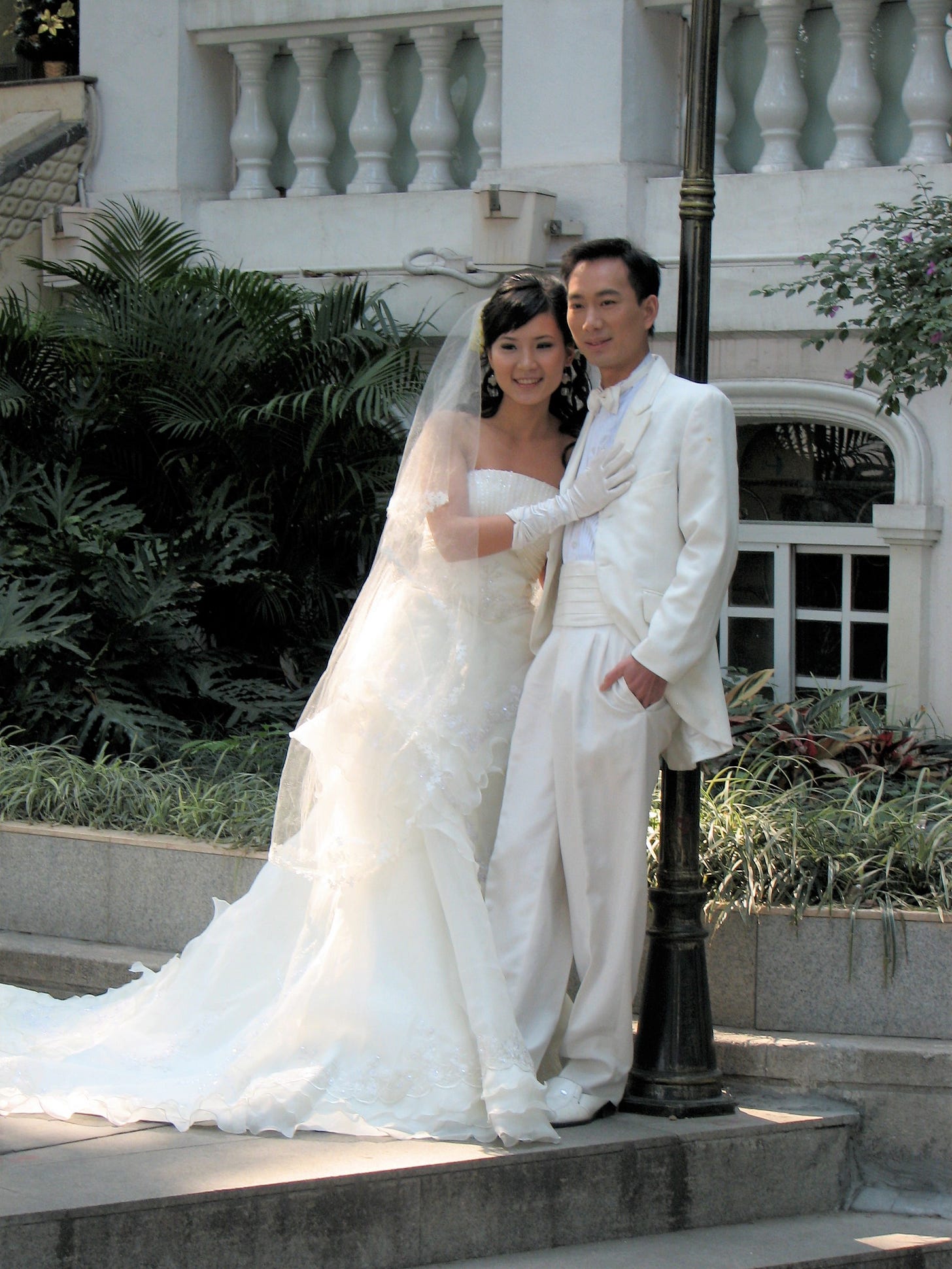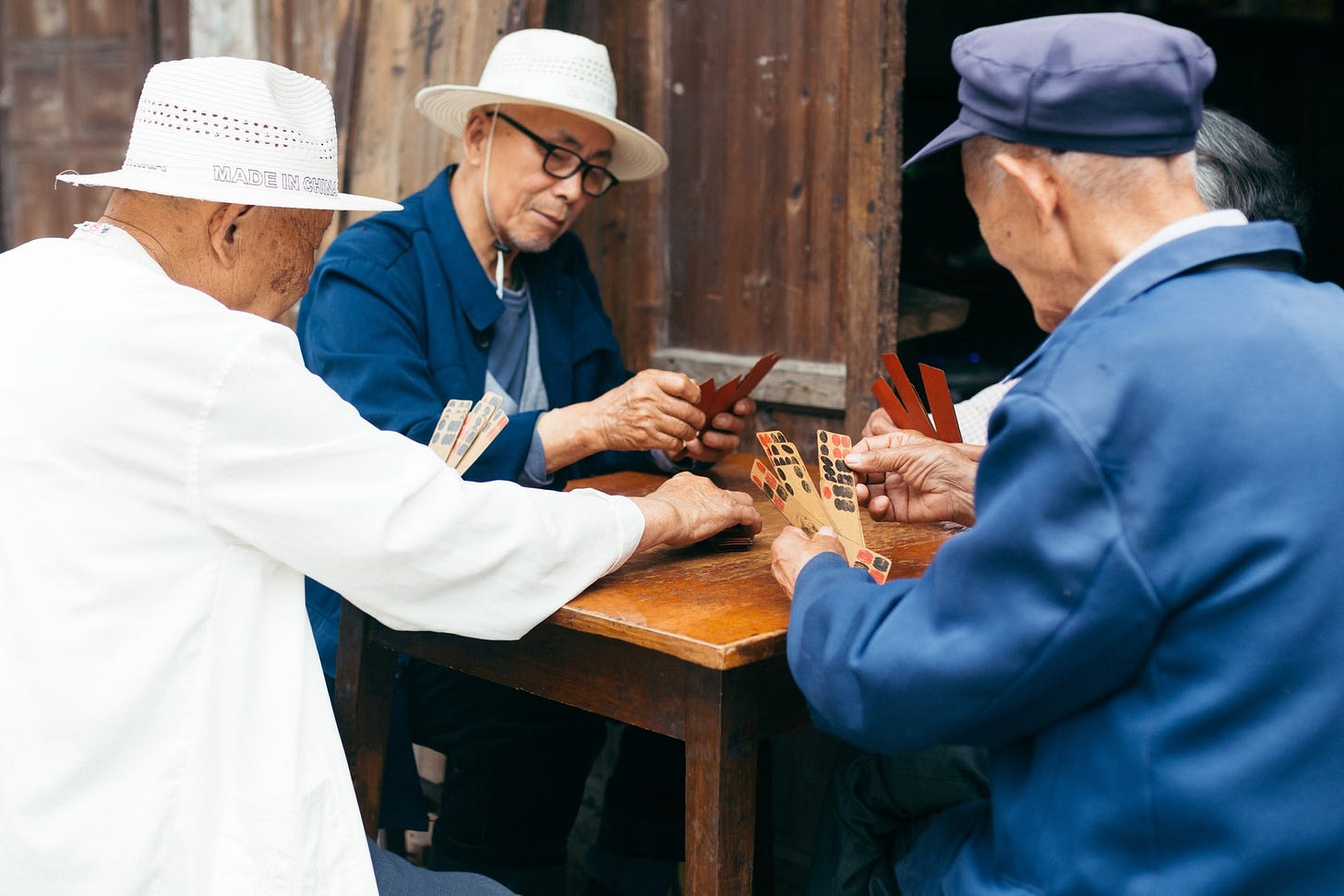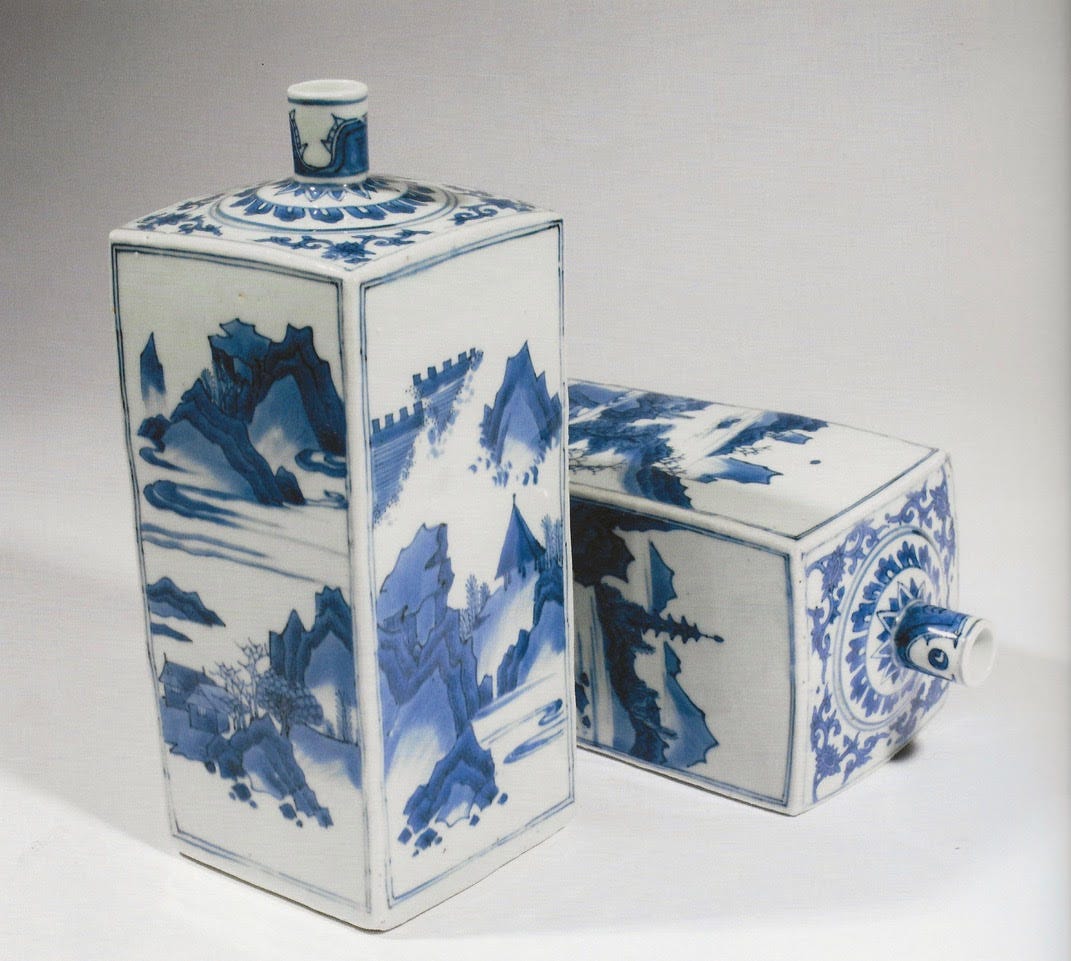In Issue 11, I discussed a systemic problem facing the U.S., specifically anti-Asian discrimination. This issue discusses a systemic problem facing China, namely a sharpening demographic crunch that has led to not enough young people being born to replace an aging population. In Chinese art, I review three Chinese “blue and white” porcelains from the famous Jingdezhen kilns.
China’s Demographic Crunch
Fade in: Zhongnanhai, seat of government power in central Beijing, a warm Spring night, the sky refreshingly clear, the pulse of the surrounding twenty-first century city electrifying the deep night air. A high government official sits at his desk.
What is it that keeps him awake at night?
For a Party whose raison d'etre is stability and control, issues such as world image, trade spats, human rights, and even domestic dustups over the ever-increasing monitoring of the physical and digital lives of the Chinese populace do not really do it. He sleeps.
But there is an issue that does, or at least should, keep him tossing and turning:
The simultaneous declines in the marriage rate of young Chinese men and women, in the birthrate of young Chinese families, and in the overall mortality rate over the past several decades as China has risen all portend the potential of a severe demographic crisis on the fast-approaching horizon, the type of problem that can undercut stability, success, and survivability. This is not new news.
For historical context, prior to the Qing Dynasty, China’s population typically plummeted during times of dynastic transition. Many tens of millions of Chinese people died when the Song Dynasty fell to the Yuan in 1279, the Yuan fell to the Ming in 1368, and the Ming fell to the Qing in 1644. But then things changed, and China’s population has risen almost continuously and dramatically since the beginning of the eighteenth century.
China surpassed 200 million people in the first half of the eighteenth century, 400 million people during the first half of the nineteenth century, and 500 million people by the mid-twentieth century. The population then skyrocketed again to well north of one billion people by the dawn of the twenty-first century. China now accounts for approximately one in five people on earth. For a general overview of China’s population history, see this Chinasage article.
So how could a nation with such a three-hundred-year track record of dramatic population growth possibly have a demographic problem of too few people?
The answer is one part regulation and one part the perils of success.
Fearing the size of the burgeoning population at a time in the latter twentieth century when China had both a weak domestic economy and social structure that could not support desired personal and national growth and advancement, the Chinese government encouraged policies aimed at delaying marriage and postponing and discouraging childbirth. This culminated in promulgation of the One-Child Policy in 1979 (The Wire China).
Before the One-Child Policy was repealed in 2015, it succeeded splendidly in controlling runaway population growth. However, combined with new technologies that allowed gender determination and a traditional desire for male children, the program had unintended consequences. Not only did the numbers of children drop, but a growing gender imbalance developed with tens of millions more boys than girls.
But numbers do not tell the entire story. This is where the perils of success come in. As is well documented, China’s economy has exploded over the past forty years. China is now the second largest economy in the world and will shortly be the largest. With this growth has come changes in the economy and society that weigh on marriage and reproduction.
Runaway housing prices, societal pressure for a man to own a house prior to becoming married, the high cost and competition in education, the overall expense of raising children, and the pressures of a high-octane, modern lifestyle are roiling the Chinese landscape.
On the marriage side of the equation, young women and men are often choosing careers over marriage (either by design or because of a lack of potential partners) or, at the opposite end of the spectrum, are marrying and then divorcing in growing numbers. And those couples who do stay married are getting married later and having fewer children. (Report in Chinese).
One researcher notes that:
“The pursuit of personal freedom and independence, as well as the high cost of raising children, are behind the decreasing willingness to get married, said Ren Zeping, dean of the Evergrande Research Institute.”
The South China Morning Post recently reported that:
“China reported 18.94 million people tying the knot in 2019, the lowest in 12 years. Those getting married for the first time dropped 41 per cent to 13.9 million in 2019 from 23.8 million in 2013, according to official statistics.”
“Preliminary 2020 birth rates for some Chinese provinces and cities came out in February and showed an alarming drop in the number of newborns, with one city reporting a 30 per cent plunge from the year before, local media reported. This followed the birth rate in 2019 that was the lowest since 1949, at 10.48 births per 1,000 people, according to China’s National Bureau of Statistics.”
On the spiking divorce side of the equation, the government recently implemented a not-so-well-received thirty-day cooling off period before divorces can be finalized. One Chinese netizen has suggested that a cooling off period before marriage would be more effective.
At the same time, China’s declining mortality rate has resulted in people living longer. Combined with fewer young people, this translates to fewer workers in the workforce and fewer people to care for the large and growing elderly population. China does not have a well-developed senior care industry or tradition. Historically, families took care of the elderly within. This is happening less and less, both in terms of desire and capacity, on the parts of the elderly as well as the younger generations.
The government has been trying to encourage people to get married, stay married, and have children. The efforts have thus far been for naught. Is it too late? Some predict doom and gloom and possibly “the end of China’s civilisation as we know it” (South China Morning Post).
Stories of China’s impending crash have been written for many years now. They have been universally wrong, and the current demographic crisis might be arrested and new avenues for continued success and stability discovered and implemented. But no matter the future outcome, in retrospect, sometimes you have to be careful what you wish for. You just might get it.
Chinese Art
A friend recently presented a lecture on Chinese export porcelains. While there are numerous, fine examples of vibrant, multi-colored porcelains (that are worthy of their own examination and appreciation), the Ming “blue and whites” from the kilns at Jingdezhen in Jiangxi Province are the most famous.
These two wine bottles date from the Chongzhen Emperor’s reign of the late Ming Dynasty (c. 1635-40). They are part of the private Lurie Collection. The Lurie’s collection of porcelains has been described as “distinctive for being among the most comprehensive collections of late Ming export porcelain ever assembled” (Book Review by Teresa Canepa in Orientations Magazine, Volume 51 Number 4, July/August 2020).
I enjoy the airy landscapes on the sides of these square bottles. Lofty peaks rise above thick clouds. The solid Great Wall stands sentinel far away. Remote buildings and pagodas perch on rocky outcrops providing sanctuary. The scenes transport me to another realm.
These two, covered mustard pots are also from the Lurie Collection and the late Ming Dynasty (c. 1635-40). They were subsequently fitted with Dutch silver mounts on the lids.
The scenes on these pots are quite different than those on the wine bottles. On one we meet a bearded, Daoist traveler walking (almost floating) across wavy fields and marshes. He carries a large branch and is accompanied by a graceful, long-necked crane in flight. The crane’s head turns back sharing a word with the Daoist. The second pot has much heavier base and collar designs and depicts deep blue flowers and a dark, long-tailed dragon flaring its majestic wings in flight.
This ewer (jug) is from an earlier period in the Ming Dynasty (c. 1520-40) and is housed at the Metropolitan Museum of Art in New York City. The time period corresponds to the arrival of the Portuguese traders and missionaries in China during the early part of the sixteenth century after traveling around the Cape of Good Hope and across the Indian Ocean.
Made for the Portuguese market, the vessel shape is actually not Chinese, but rather a copy of a Near Eastern Islamic form that was earlier adapted by the Chinese during the overland Silk Road trade, and now (sixteenth century) updated for the European market. The principal design on each side is a Portuguese royal coat of arms. We can tell that the Chinese artist did not know what a coat of arms was because he presented them upside down.
China Resources
Do you like covered bridges? Did you know that China has a rich tradition of covered bridges and thousands of examples? If you want to learn more, I encourage you to read Professor Ronald Knapp’s Springer Open Research Article, “China’s corridor bridges: heritage buildings over water.”
Follow Andrew Singer on Social Media: Instagram, Facebook, Twitter.












Kathy Aspdenjust now
China’s population decline feels like the ultimate Alice in Wonderland phenomenon to a sixty-something Westerner like myself. The pendulum swings, and hopefully in this case it hasn’t gone too far. When you bring up generations of people who are told having children is socially irresponsible and then they don’t...